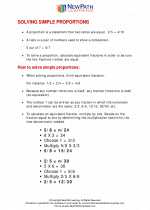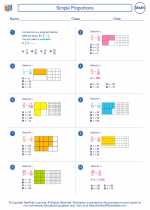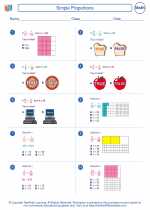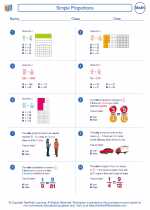Venn Diagrams
A Venn diagram is a visual representation of sets and their relationships to one another. It is a useful tool to organize and understand the relationships between different sets of data. Venn diagrams are composed of overlapping circles or other shapes, with each circle representing a set and the overlapping areas representing the elements that are common to both sets.
Key Concepts:
- Sets: A set is a collection of distinct objects or elements. In a Venn diagram, each circle represents a set.
- Union: The union of two sets, denoted by A ∪ B, includes all the elements that are in set A, set B, or both.
- Intersection: The intersection of two sets, denoted by A ∩ B, includes only the elements that are common to both set A and set B.
- Complement: The complement of a set, denoted by A', includes all the elements that are not in the set A.
Example:
Let's consider the following sets:
A = {1, 2, 3, 4, 5}
B = {3, 4, 5, 6, 7}
To represent these sets using a Venn diagram, we would draw two overlapping circles, one for set A and one for set B. The elements 3, 4, and 5, which are common to both sets, would be placed in the overlapping area of the circles. The elements 1 and 2 would be placed in the non-overlapping portions of circle A, and the elements 6 and 7 would be placed in the non-overlapping portions of circle B.
Study Guide:
To effectively use Venn diagrams, it's important to understand the following concepts:
- Identifying elements that belong to each set.
- Determining the union and intersection of sets.
- Recognizing the complement of a set.
- Solving problems involving set operations using Venn diagrams.
Practice drawing Venn diagrams for different sets and solving problems that involve set operations. This will help reinforce your understanding of how to use Venn diagrams to visually represent and analyze sets and their relationships.
Remember, a Venn diagram provides a clear and visual way to understand the relationships between different sets, making it a valuable tool in various areas of mathematics and beyond.
.◂Math Worksheets and Study Guides Sixth Grade. Simple Proportions

 Worksheet/Answer key
Worksheet/Answer key
 Worksheet/Answer key
Worksheet/Answer key
 Worksheet/Answer key
Worksheet/Answer key
